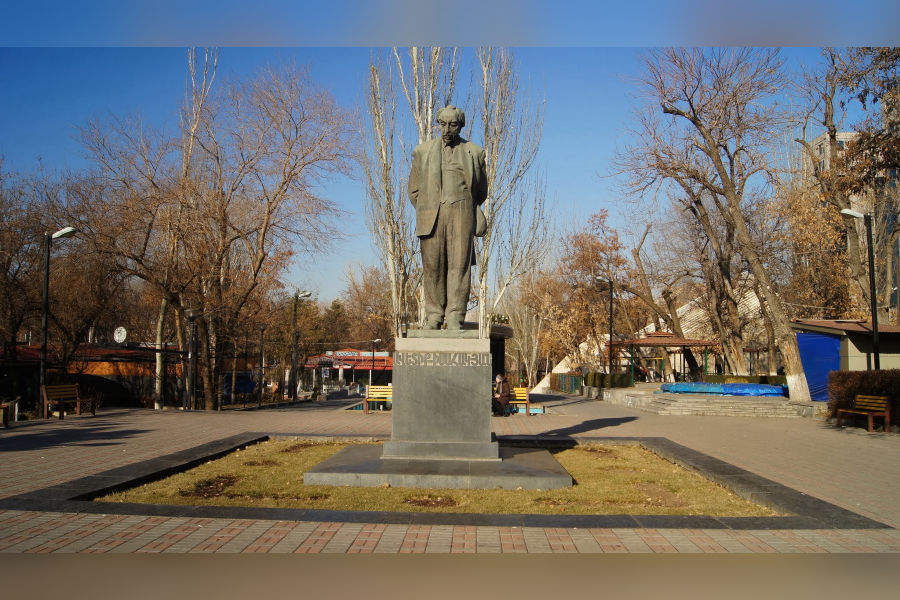At the end of October, documentary film lovers in Lisbon had the chance to attend DocLisboa International Film Festival. Among the many films screened, two stood out for the quiet power with which they depict vanishing worlds and the people who inhabit them. Both invite reflection on time, memory and harsh reality, while opening their doors to love, empathy and an endless interest in the fate of their characters. Both also come from filmmakers rooted in Southwest Asia.
These two powerful documentaries — “The Vanishing Point” by Iranian-American filmmaker Bani Khoshnoudi and “With Hasan in Gaza” by Palestinian filmmaker Kamal Aljafari — share a meditative approach to documenting disappearance. The latter also opened this year’s festival.
“The Vanishing Point” tells a story from the perspective of a director in exile and stands as a deeply political piece of filmmaking. Composed of found and original footage, much of it shot on a pocket camera initially intended only for pre-production, the material became the film itself.
Still from “The Vanishing Point”
In Khoshnoudi’s film, the viewer encounters scenes of violence and death that some audience members struggled to interpret — as if such a film could be consumed casually, with popcorn and wine. She also incorporates Armenian folk music, without specifying the author and composition, though the mournful melody makes it clear that it’s about sorrow.
What she shoots from her pocket camera instantly becomes hypnotic. She films the streets of Tehran — from a taxi, across construction sites and through daily life — capturing ordinary moments that stretch into long, meditative takes.
These scenes unfold slowly, often without overt drama, except when Khoshnoudi turns her lens toward the Iranian uprising against the regime, in which she herself participates. From this perspective, a similar approach emerges in Aljafari’s “With Hasan in Gaza,” whose sustained shots and patient rhythm evoke comparable emotions.
In 2001, Aljafari began documenting his search for a man he had been imprisoned with in 1989. Accompanied by another man named Hasan, he wandered through the streets of Gaza, filming their encounters and the city’s fragile normalcy. Years later, Aljafari rediscovered the forgotten footage on his MiniDV tapes. The recovered material became “With Hasan in Gaza” — a cinematic document capturing Gaza in a moment of fleeting calm, before much of what he filmed would vanish.
Alongside the film’s long, monotone shots, one particular image stands out: Aljafari holds his MiniDV camera on a children’s room for an extended take. The room is tidy, with toys neatly arranged and beds made — it’s easy to imagine a happy, ordinary childhood here. From the window, the sounds of shelling can be heard, though the explosions themselves are not visible. The camera lingers, letting the viewer feel the tension and fragility of life.
This ordinary space becomes a powerful symbol of disrupted childhood and vulnerability.
For me, this scene is the emotional peak of the film — showing the human cost of conflict and the uncertainty of everyday life.
There is much in common between these two filmmakers and their hypnotic long shots: a shared sense of urgency and instinct. The camera becomes a witness, its role to capture something before it vanishes.
In “The Vanishing Point,” Khoshnoudi, already living in exile, captures her final moments in Tehran — an ultimate act of witnessing before the city becomes a memory she can no longer revisit.
In the case of “With Hasan in Gaza,” Aljafari shoots the streets of Gaza — bustling markets, coastlines, elderly men playing cards, children at play — documenting everything and everyone that appears in front of the camera. The film conveys the experience of witnessing something that, quite literally, will vanish soon.
Still from “With Hasan in Gaza”
The footage, handheld and un-stabilized, without formal sound design, acquires a mesmerizing quality, raising the question: how did he intuitively capture what was destined to vanish?
While watching this film, one notices children approaching him, asking to be photographed — bright and joyful faces that linger in the frame. Yet, a terrifying logic persists: Where are these children now? Have they grown? And then?
For both filmmakers, instinct operates with profound sensibility. Their constantly rolling cameras — most of the time capturing seemingly ordinary moments that ultimately become extraordinary — reflect a deeply intuitive awareness. Both capture the reality before them — unstable, harsh and unfair, yet worthy of patient observation and witnessing, before it, too, vanishes.





